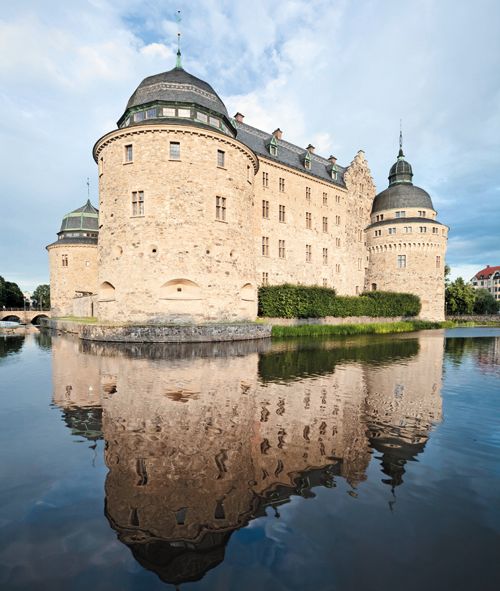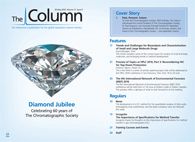The 6th International Network of Environmental Forensics (INEF) 2016
The 6th International Network of Environmental Forensics (INEF) 2016 conference will be held from 27–30 June at Örebro Castle in Örebro, Sweden.

The 6th International Network of Environmental Forensics (INEF) 2016 conference will be held from 27–30 June at Örebro Castle in Örebro, Sweden.
The International Network of Environmental Forensics (INEF) was created in 2008 to provide a forum for scientists, environmental consultants, regulators, and attorneys to share information regarding the use of environmental forensics. The INEF conference is designed to provide a formal and informal setting to engage scientists working in this field, and to allow opportunities for in-depth discussion and questioning. Environmental forensics is the use of scientific techniques to identify the source, age and timing of a contaminant into the environment. The conference allows multidisciplinary expertise in natural sciences, such as chemical fate and transport; environmental, analytical, and isotope chemistry; environmental sampling, toxicity, and statistics; and also knowledge of law and communication to be bought together. The conference will include a series of hands-on short courses followed by three days of plenary talks by invited leading scientists and oral and poster presentations from selected abstracts. The technical sessions of the conference will cover a wide variety of environmental topics including: contaminant and microbial source apportionment and tracking; use of isotope ratios in forensics applications; biomonitoring and human exposure; identifying emerging organic and inorganic environmental contaminants; multidimensional gas and liquid chromatography (GCxGC, LCxLC); applications of new technologies (atmospheric pressure gas chromatography [APGC]; development of signature techniques to source and age contaminant release; teaching in environmental forensics – challenges and strategies; and advanced forensic techniques – visualization, modelling, statistical analysis. A number of keynote speakers have been invited to the conference. Kim Esbensen will present a short course on Monday 27 June focusing on “The Theory of Sampling”. This will be followed by environmental case studies from both the inorganic and organic field. The programme will also have a number of plenary lectures including “Robotics Olfaction and Environmental Forensics” by Amy Loutfi of Örebro University (Örebro, Sweden); "POP Measurements: Tracking Down the Part in the Quintillion" by Jef Focant, University of Liège (Liège, Belgium); "Detective Work in Food and Feed Incidents with Dioxins and PCBs" by Rainer Malisch from the Dioxin Laboratory, State Institute for Chemical and Veterinary Analysis of Food (Freiburg, Germany); "Environmental Forensics, Its elementary!" by Gwen O´Sullivan, Mount Royal University (Calgary, Alberta, Canada); and “Future of Environmental Forensics” by Court Sandau, Chemistry Matters (North America). Other leading scientists who will be presenting during the conference include Glenn Johnson, Jack Cochran, Paul Geladi, and Henk Bowman. As well as the series of high-quality lectures there will also be breakout periods with poster presentation sessions and exhibitor booths for delegates to browse with complimentary refreshments provided. There will also be talks from students currently studying environmental forensics. To boost student participation INEF are offering several travel grants to prospective students to help them attend the conference. Students are also encouraged to enter the student competition for the best presentation when submitting their abstracts. The top three students will all receive a generous monetary prize. The conference venue is medieval Örebro castle situated in the centre of Örebro city in the heart of Sweden. Örebro offers many interesting tourist attractions, the most famous being the castle, which dates back to the 13th century. Örebro has a rich cultural life with the County Theatre, the Swedish Chamber Orchestra, which performs at the Concert Hall, and various museums and galleries. The city also offers a wide range of sporting and leisure activities in the town, in the mountains, and by Lake Hjälmaren - the fourth largest lake in Sweden. Örebro is the capital of cycling in Sweden. Cycling in Örebro is easy; there are many cycle lanes and it is possible to hire a low-cost municipal bike easily. The conference follows the major Midsummer holiday in Sweden. To continue these national festivities all delegates will experience the traditions of a Midsummer dinner on the Tuesday. During the Wednesday the conference dinner will be held at medieval Örebro Castle where dinner will be accompanied with entertainment by a historian. Daring delegates will also be invited to a ghost tour after dark!

LCGC Blog: Forensics Laboratories Underassess Uncertainty in Blood Alcohol Determinations
August 8th 2023The level of uncertainty provided by most forensic laboratories for reported blood alcohol results has been woefully underassessed. Not only is this bad science, but someone’s civil liberties may be at stake.
Ink Source Prediction and Assessment Made Possible by Mass Spectrometry
May 22nd 2023Scientists have developed a new method for predicting and assessing the source of black inks using direct analysis in real-time mass spectrometry. By applying dimensionality reduction techniques and likelihood ratio analysis, the researchers achieved high accuracy in identifying ink sources, demonstrating the potential of this approach in forensic ink analysis.
The LCGC Blog: Forensics Laboratories Underassess Uncertainty in Blood Alcohol Determinations
May 2nd 2023The level of uncertainty provided by most forensic laboratories for reported blood alcohol results has been woefully underassessed. Not only is this bad science, but someone’s civil liberties may be at stake.